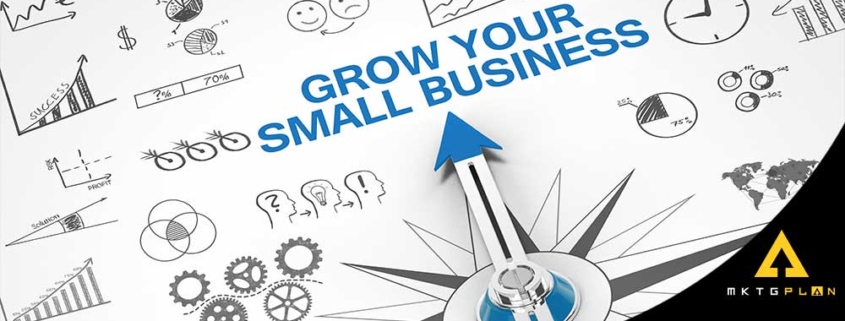Mastering Customer Recovery: Turning Challenges into Success
Mastering the Tactics of Customer Recovery: Turning Detriments into Assets
Join us as we delve into the art of customer recovery with Jon Picoult, a distinguished authority in customer experience, founder of Watermark Consulting (now MKTG Plan), and author of “From Impressed to Obsessed: 12 Principles for Turning Customers and Employees into Lifelong Fans”. Over the years, Jon has consulted for a myriad of global brands, offering direct advice to CEOs and C-Suite executives. He empowers organizations to harness the power of customer and employee loyalty, within the market, and internally.
Key Takeaways:
In the sphere of customer experience, errors are unavoidable. However, by handling customer recovery with finesse, empathy, and exceptional responsibility, venture can turn setbacks into opportunities to create zealous fans. As a rule, a well-managed recovery often leaves a more favorable impression on customers compared to an uneventful, albeit seamless experience.
Detailed Insights:
Becoming a Customer Experience Expert
Embarking on becoming a customer experience expert often starts by encountering firsthand how minute details in customer interactions can significantly influence their likelihood to conduct business with you. This realization is often amplified when one gets to lead various areas such as sales, marketing, service operations, and distribution as gaining multiple perspectives of delivering customer experience tends to highlight an organization’s biggest challenge. This challenge is realizing a unified vision for delivering satisfying customer experience within different functional units of an organization. Such experience typically triggers a desire to start a consultancy, leading you into becoming a sought-after customer experience expert.
Unifying an Organization around a Customer Experience Vision
Aligning an entire company to a singular customer experience vision often requires effective leadership, especially from the top management. This leadership involves passionately weaving the vision into every action the company takes. It also entails holding everyone accountable for maximising not just their individual metrics, but for understanding their role in the big picture and voicing out whenever an enterprise’s larger objective may be compromised.
Managing Customer Expectations in the Post-Pandemic Era
Loading Times into website design
During the pandemic, customers became more forgiving, especially in light of supply chain disruptions and diminishing customer service standards. However, as the pandemic wanes, customers’ expectations heighten as they become less accommodating towards enterprises that attribute poor customer experience to the pandemic. To thrive in this era, businesses must have retained their focus on delivering quality customer experience during the downturn to bounce back stronger.
Playing Catch-Up: Speed in Customer Experience
Speed is crucial in today’s customer experience, hence making it a key driver to success. Quick responses to customer inquiries allow a business to stand out from the crowd, reducing customer effort and creating a memorable experience. Despite this, speed is not always desirable, as its importance may vary depending on the nature of the business and its value proposition. In some high-end luxury businesses like Hermes, for instance, the prolonged waiting period for products delivery increases the products’ allure, making it a part of their brand strength.
Transforming the Customer Experience
Transforming a customer’s experience is not only about fixing what is broken, but also discovering and delivering on unasked customer needs and wants. Taking the example of an automation technology company that aided medical laboratories, the company found that while their technology facilitated lab processes, the biggest challenge for their customers was managing the change among lab technicians. To solve this, the company offered a turnkey program to help manage the change, making the lab leaders at the hospitals heroes in the eyes of their employees. This demonstrates that creating ‘raving fans’ among your employees, who are indeed types of customers, could be tied to delivering solutions to unasked needs and wants.
Price VS Experience: Balancing the Scale
It is undeniable that happy customers are willing to pay more for a better experience as they tend to focus on the value of the relationship, not the cost of individual transactions. A good customer experience can lead to higher loyalty and consequently, less price-sensitive customers. This can eventually lead to more business as customers who value the relationship are more likely to buy other products and services, as well as refer others.
Damage Limitation: Salvaging a Poor Customer Experience
Crafted as part of a culture, behavior, and practice, salvaging a poor customer experience starts with empathy, acknowledging the customer’s discomfort. This should be followed by exceptional ownership of the complaint, ensuring the customer feels that the personnel they are speaking to is doing all they can to resolve the issue. This often creates a commitment to the customer, further enhancing their loyalty.
Taking a Health Check: Identifying and Addressing Gaps in Customer Experience
Identifying the holes in your customer experience can be approached by assuming customer roles and going through the process of purchasing or learning about a product. In addition, you can engage your staff by asking them about customer annoyances or frustrations. Such engagements not only highlight opportunities for improvement but also boost employee experience.
The Role of AI in Customer Service and Experience
Artificial intelligence (AI) is becoming progressively vital in enhancing the customer service sector. AI’s current biggest advantage is its ability to provide a ‘virtual co-pilot’ to customer service personnel, helping them navigate through vast reams of information swiftly and accurately. This enables the staff to focus more on nurturing the customer relationship and less on transactional elements, ultimately improving the customer experience.
Transforming Negative Experiences into Positive Ones
The skill that cornerstone businesses adopt is the capability to resolve customer complaints with style, stress empathy and show exceptional ownership. This strategy definitely leaves a lasting and positive impression on the customer’s mind. Such a response forms the basis of transforming disgruntled customers into zealous fans, as they feel both seen and heard.
Become an Informed Customer
One motivating and effective way to identify gaps in the customer experience is to put yourself in the shoes of a customer. This perspective offers valuable insights into the day-to-day challenges customers face when interacting with your business. These insights might be from the initial effort of trying to learn about a product or service, to the actual process of purchasing and using it.
Artificial Intelligence: Improving the Quality of Customer Interactions
Artificial intelligence (AI) is gradually becoming instrumental in managing and enhancing customer service. The primary advantage of AI presently resides in its functionality to serve as a ‘virtual co-pilot’ for customer service personnel. It aids them in swiftly and accurately sifting through a sea of wide-ranging information. This assistance frees up time and cognitive resources for the staff, allowing them to focus on nurturing customer relationships rather than getting bogged down in transactional details. As AI continues to evolve and improve, its role in customer service and experience will undoubtedly grow more crucial.
Fleeting Thoughts
Customer recovery is a crucial skill for any business striving to stand out in today’s competitive marketplace. It’s no longer enough to simply deliver a stellar product or service — companies must also demonstrate an unwavering commitment to excellent customer care, especially when things go wrong. By keeping lines of communication open, taking ownership of problems, and working proactively to find solutions, businesses can turn potentially damaging experiences into opportunities for growth.
Go Above and Beyond for Ultimate Customer Satisfaction
Customer service is not only about solving problems or fixing what is broken. Going above and beyond involves unearthing and responding to customer needs and wants that they may not have articulated. This not only satiates explicit customer issues but also implicitly enhances the customer experience by making them feel valued and listened to, which indirectly boosts customer loyalty.
Concluding Thoughts
In conclusion, successful businesses take customer complaints as an opportunity to show their commitment to customer satisfaction and loyalty. By managing these situations with grace and a sense of responsibility, they can turn potentially negative situations into opportunities for growth. Moreover, they align their internal teams around a shared vision for delivering the best customer experience, continuously assessing and improving their methodologies. Businesses need to utilize the power of emerging technologies like artificial intelligence to aid in providing seamless customer service. They should prioritize treating customer relationships as essential assets, using every point of interaction as a chance to make a lasting positive impression.
About MKTG Plan:
MKTG Plan is a comprehensive marketing agency specializing in website design, SEO, and more. With a focus on delivering exceptional customer experiences, the company helps businesses in Miami and beyond—taking their marketing to the next level and ensuring customers become lifelong fans. For more information, visit mktgplan.com.



